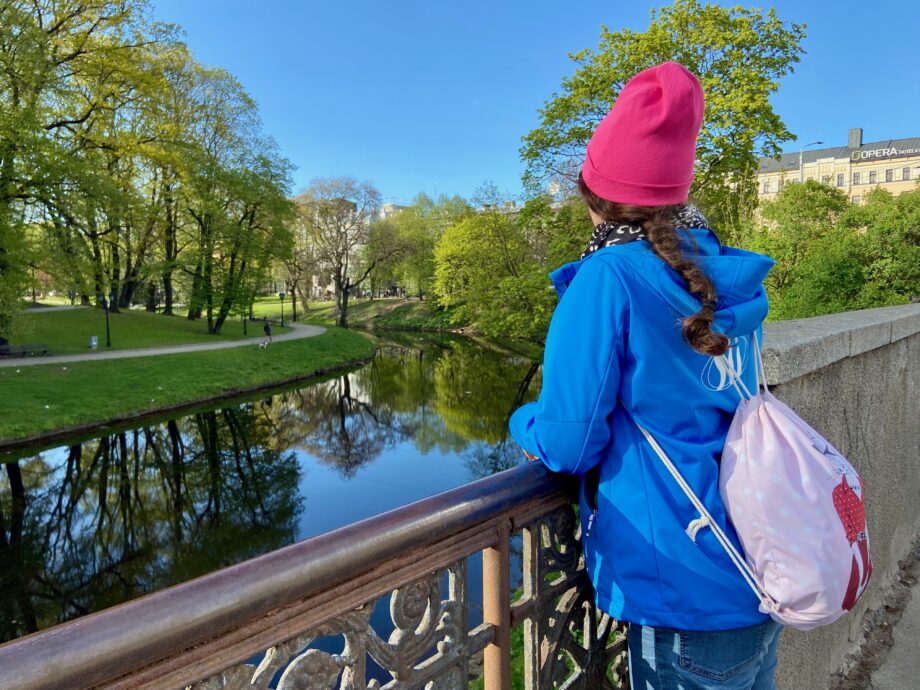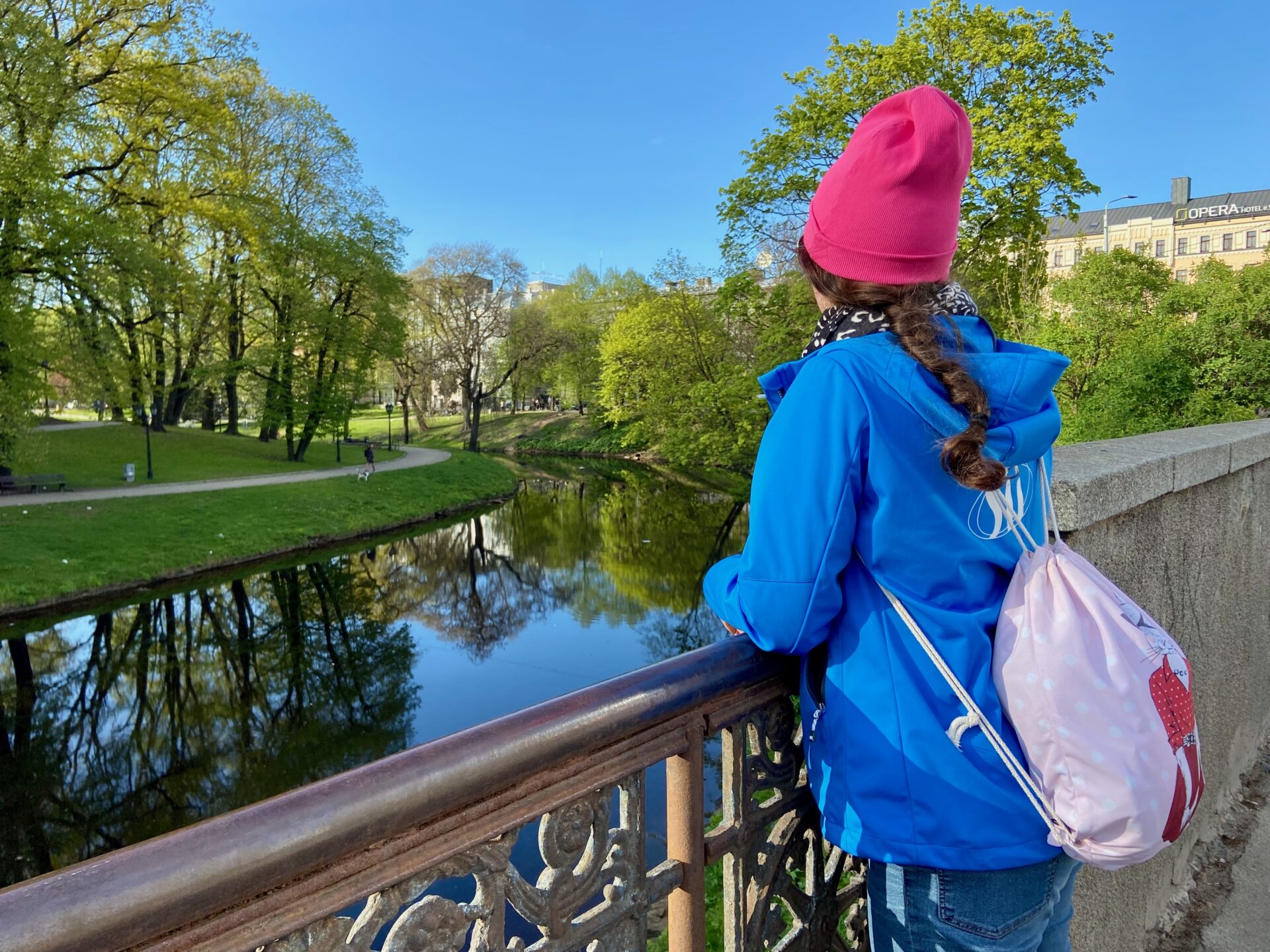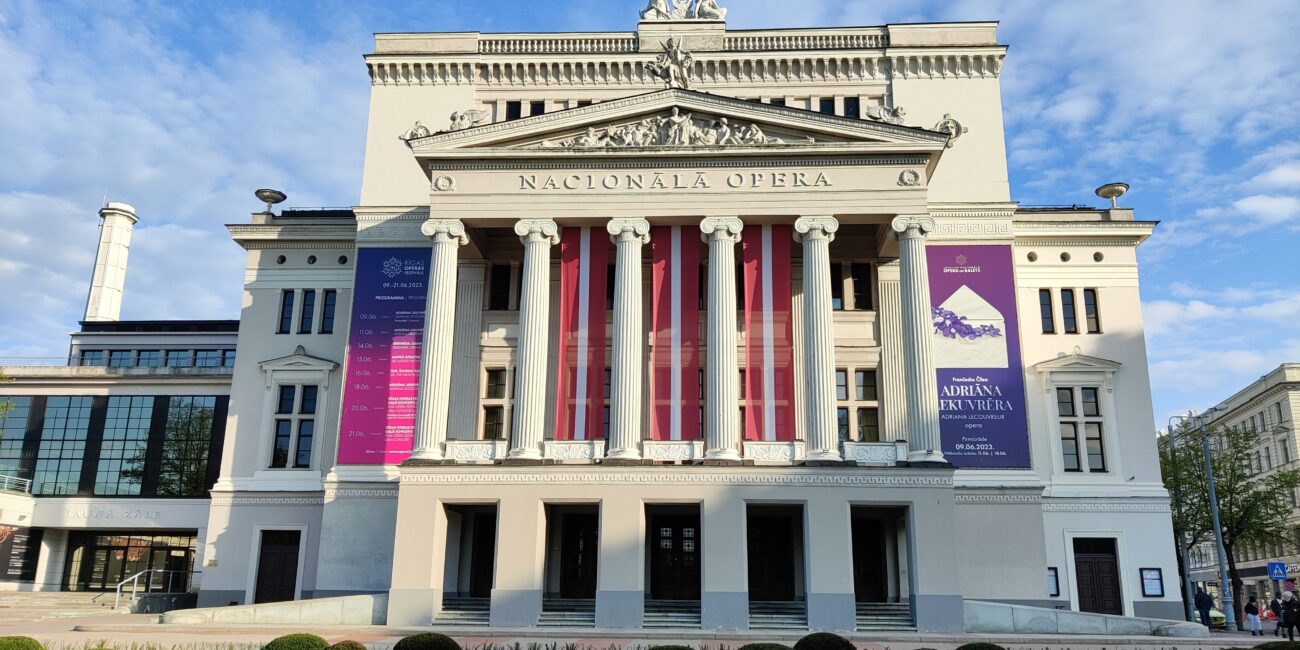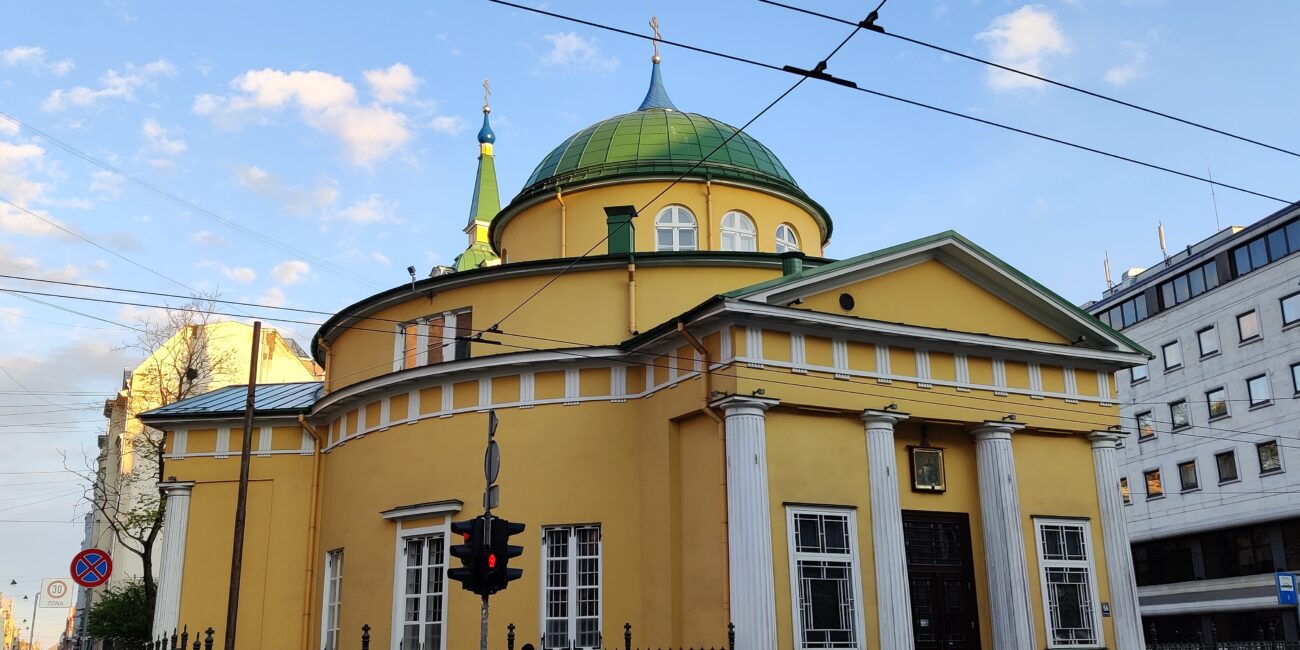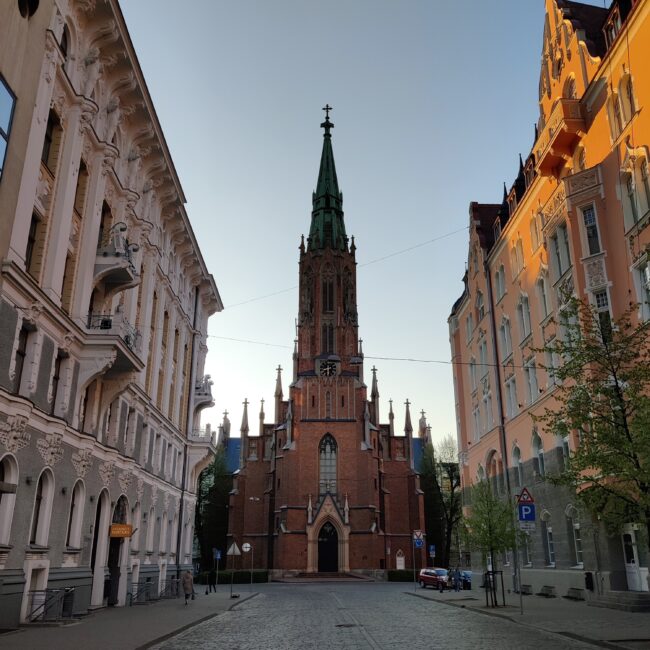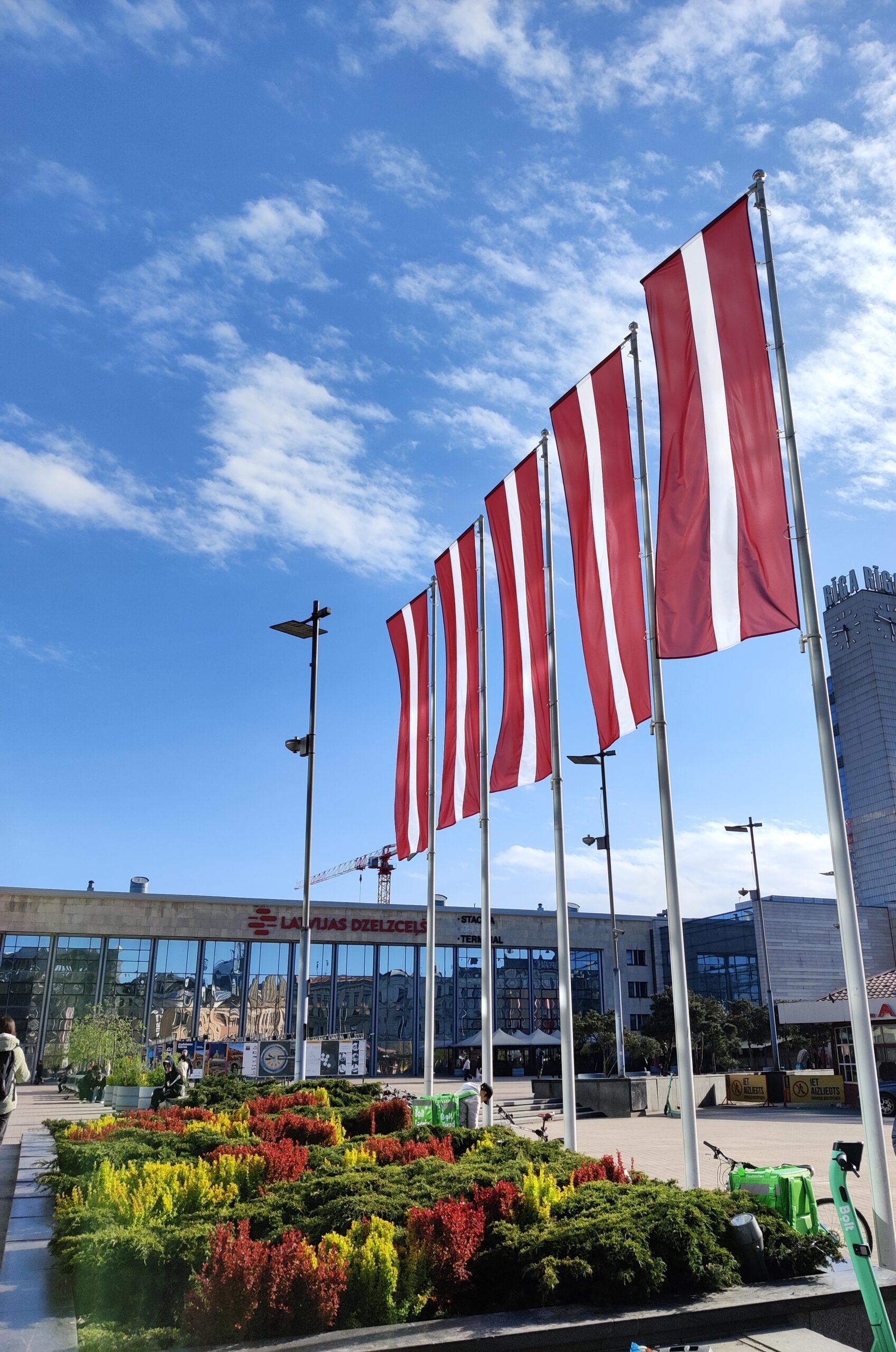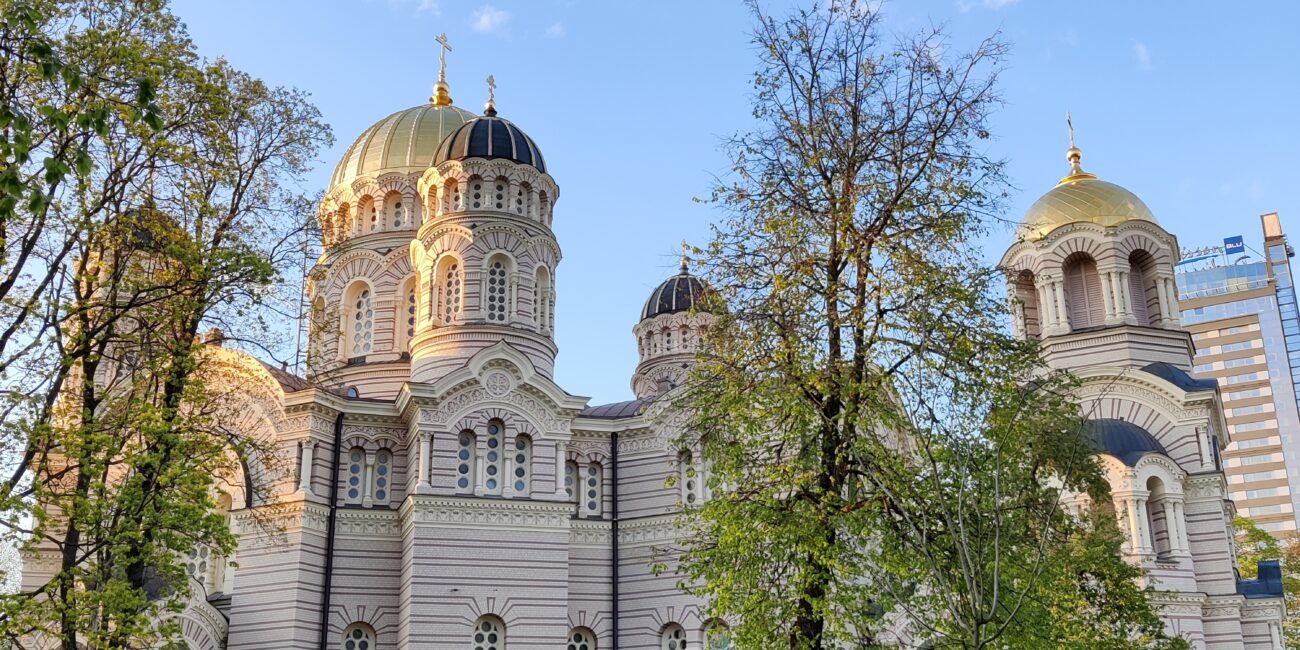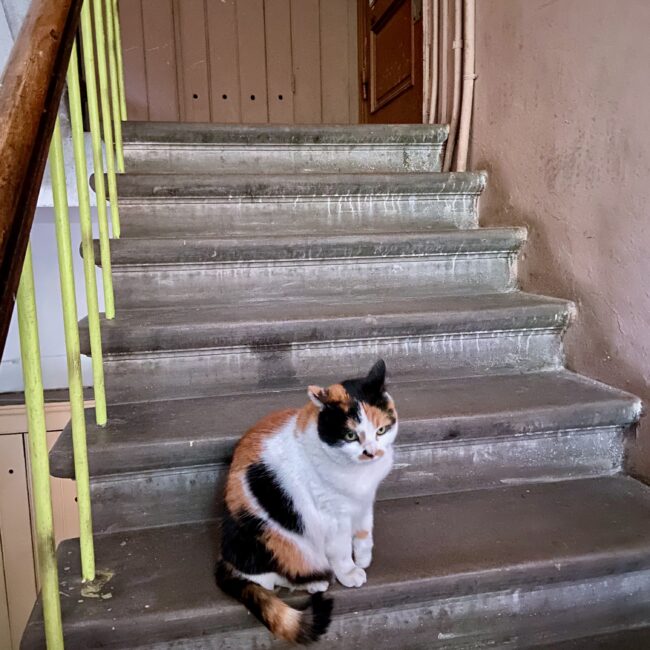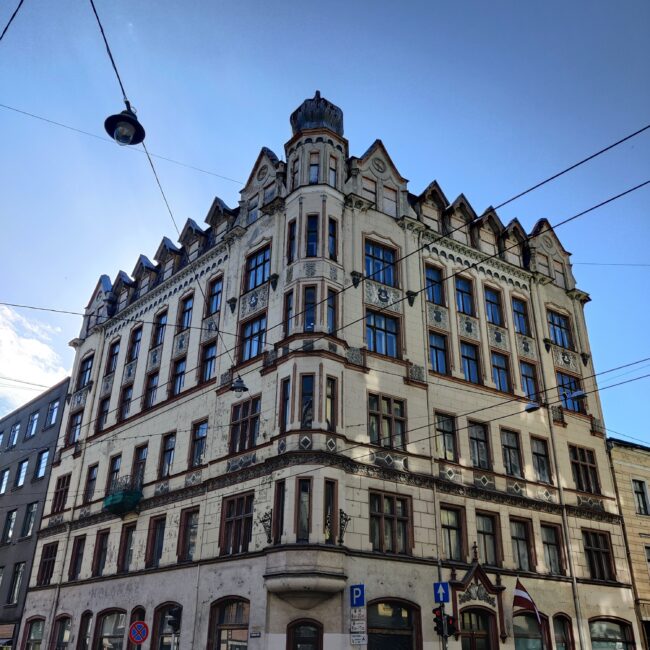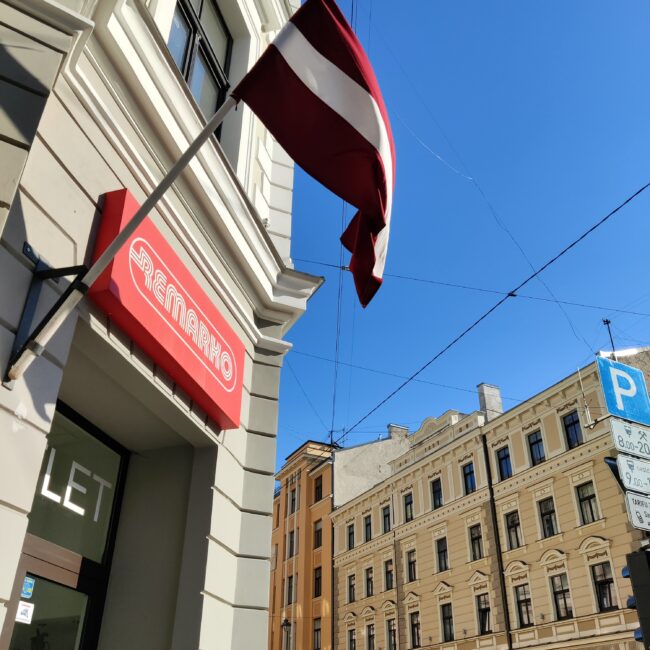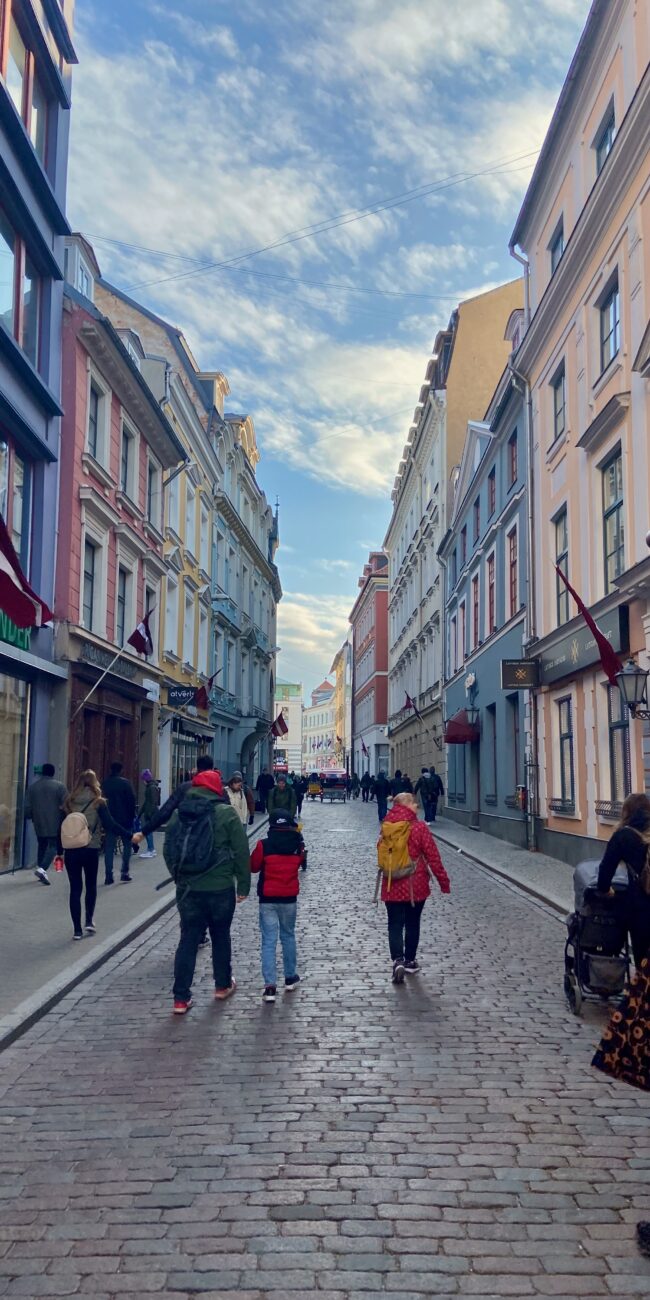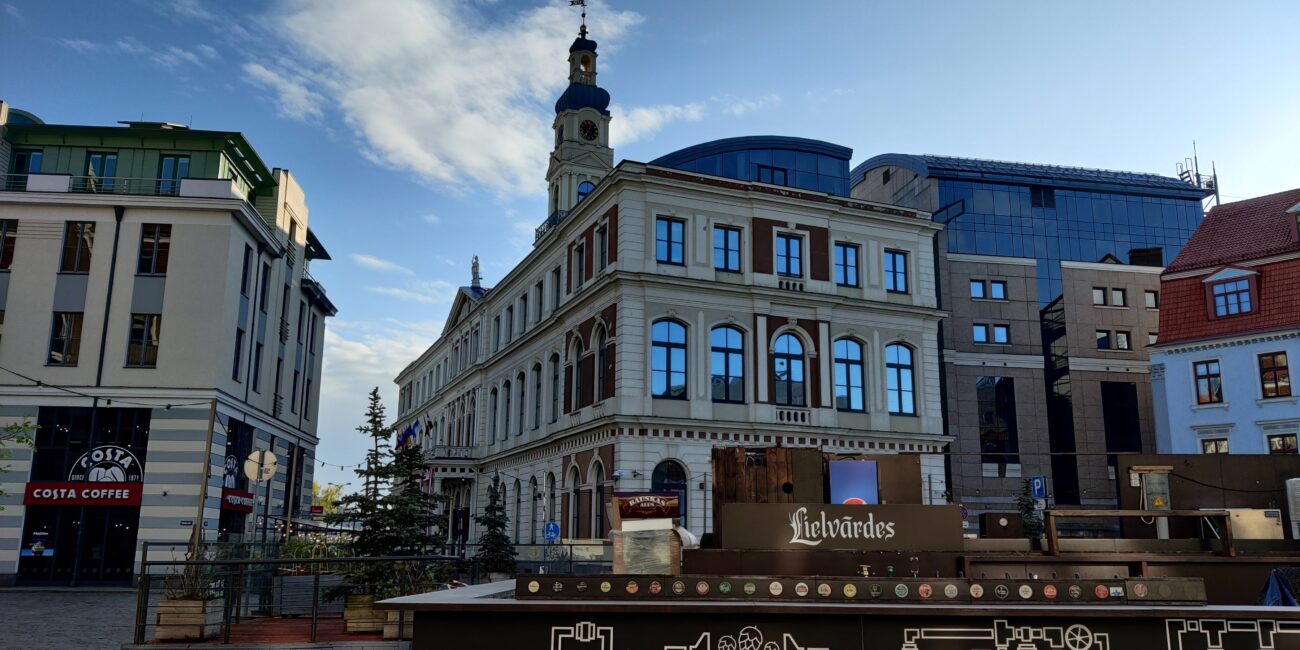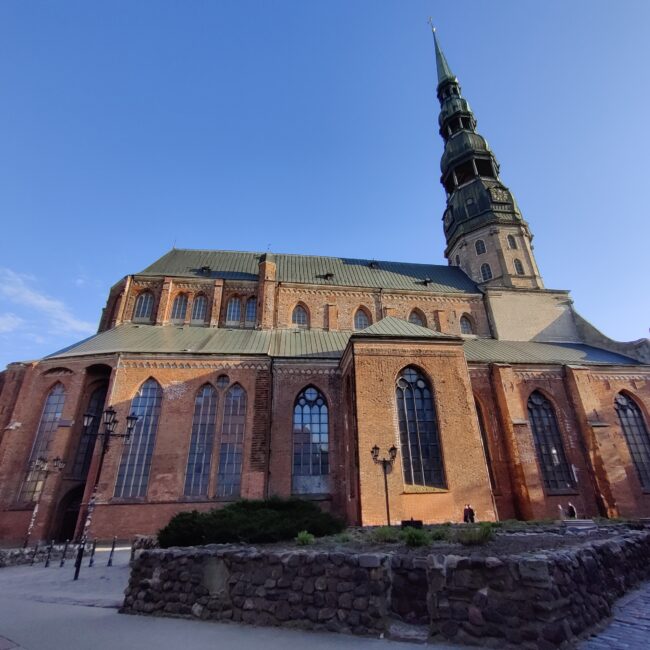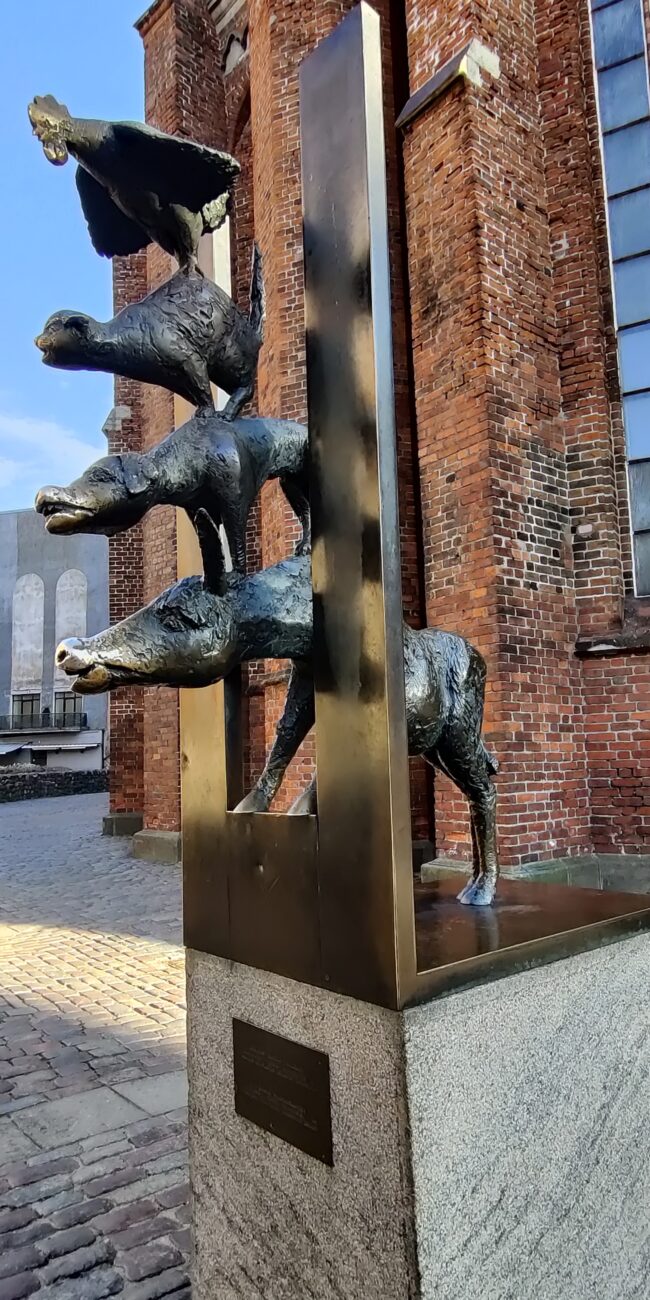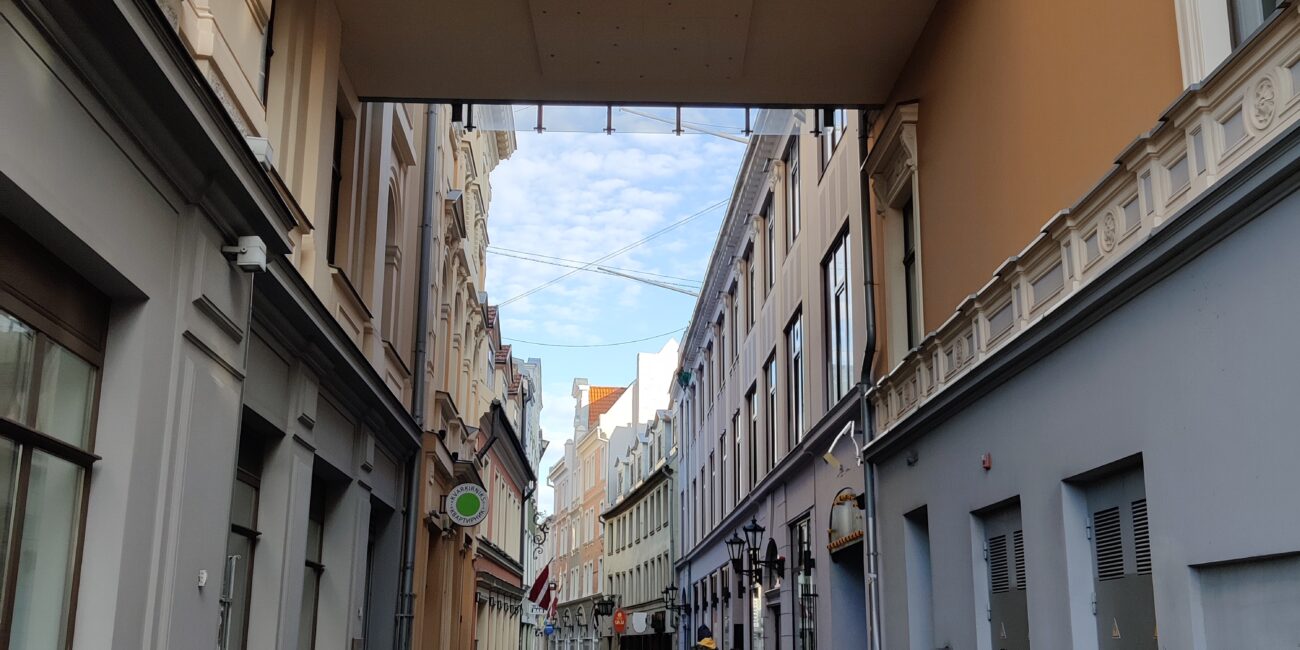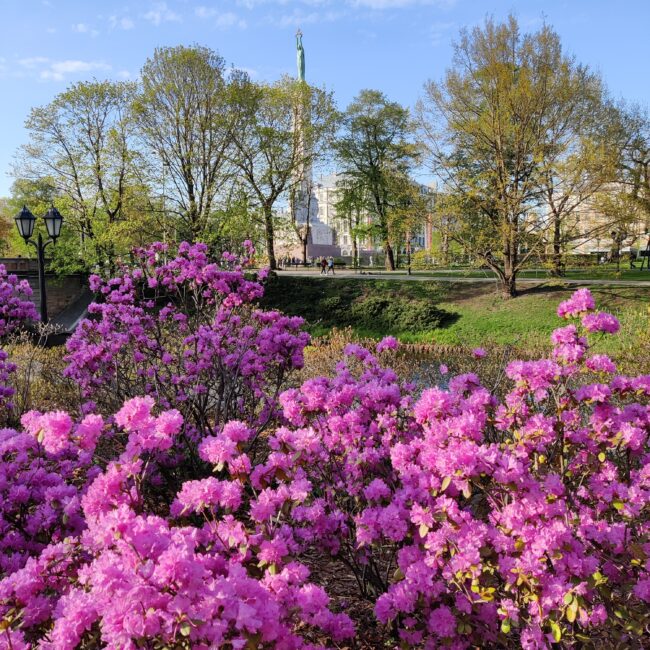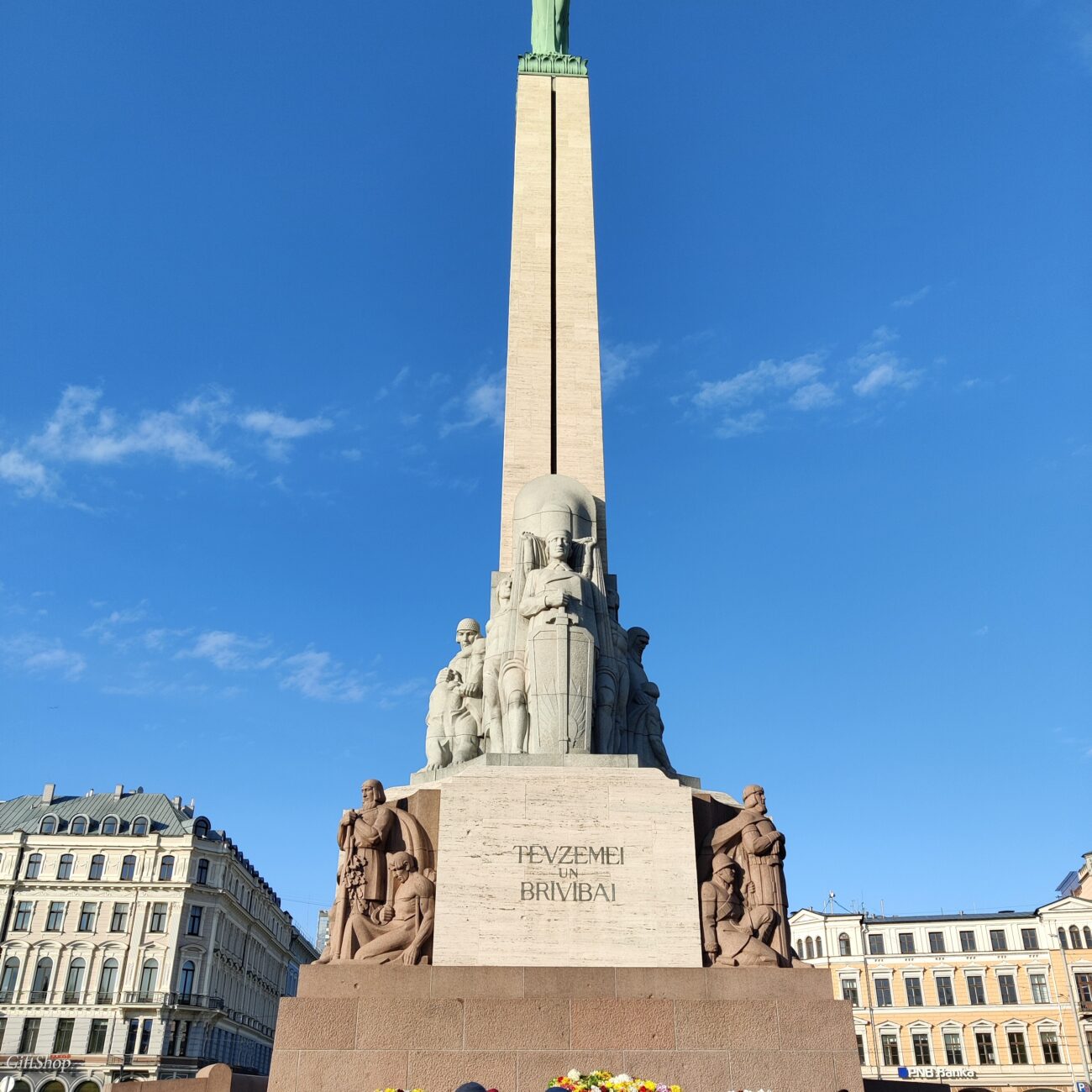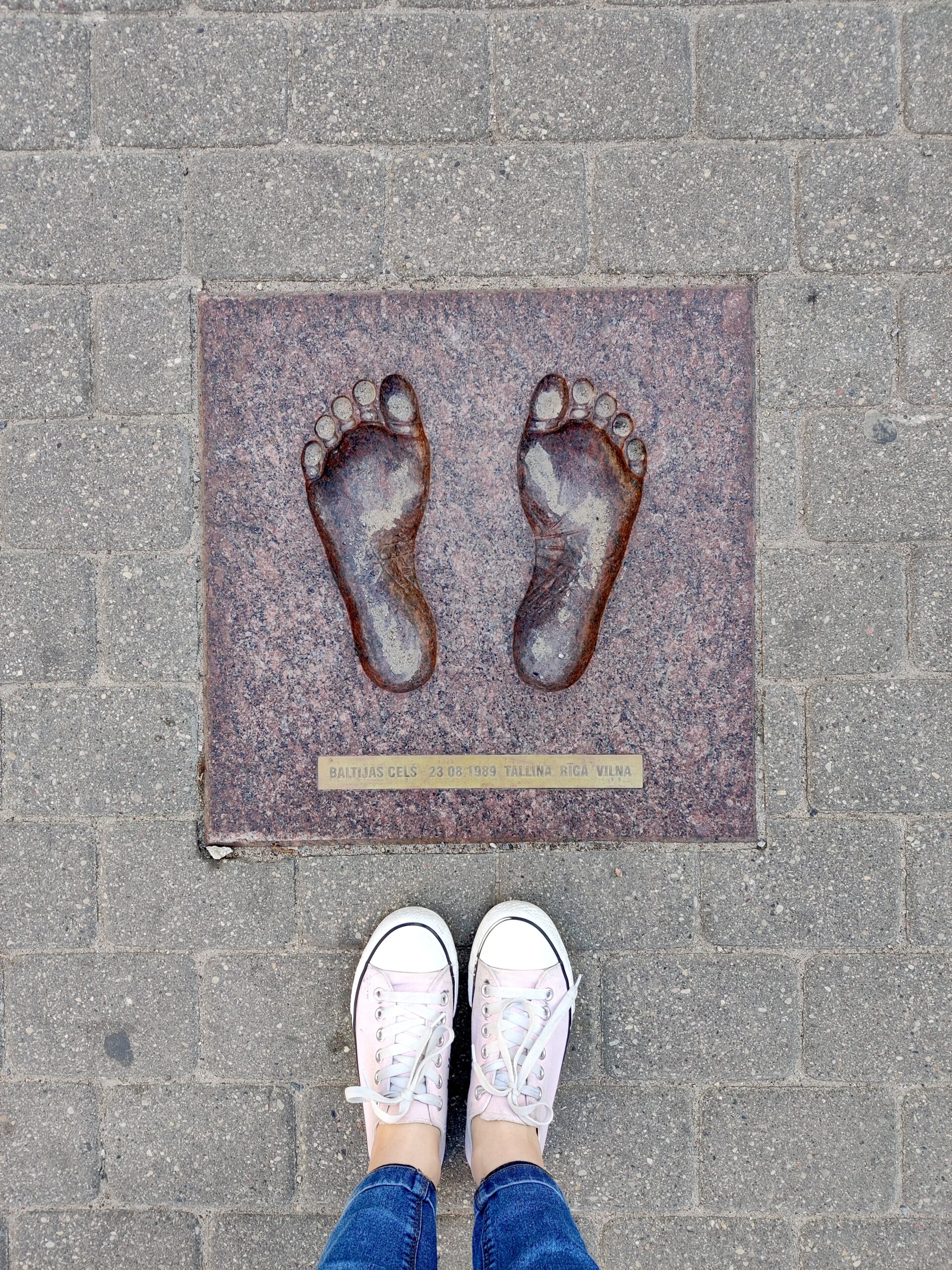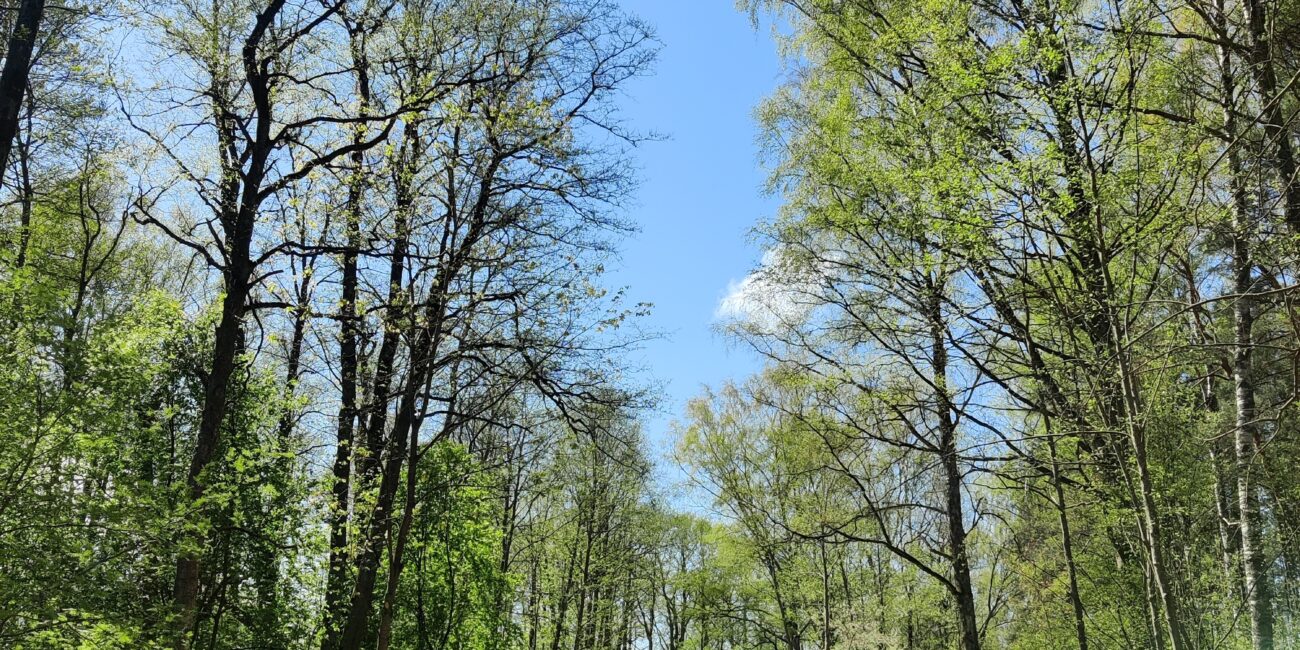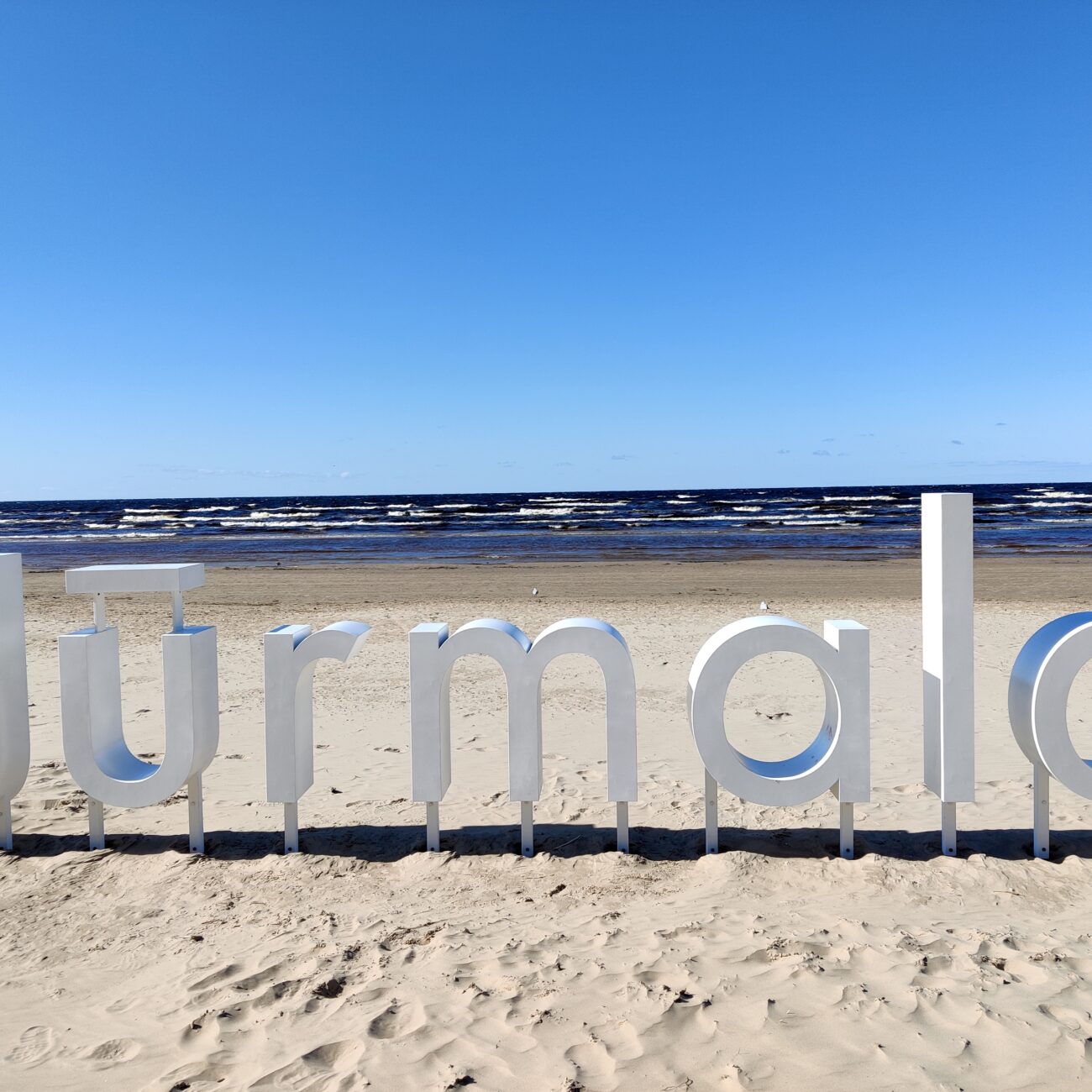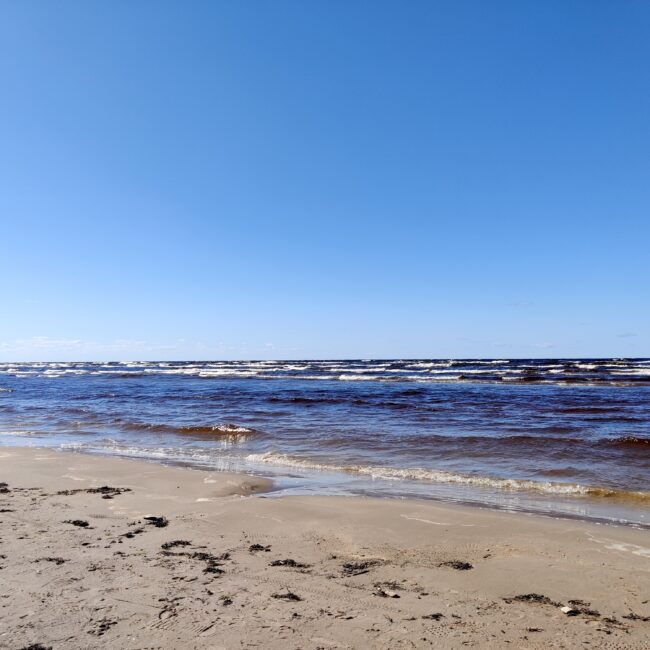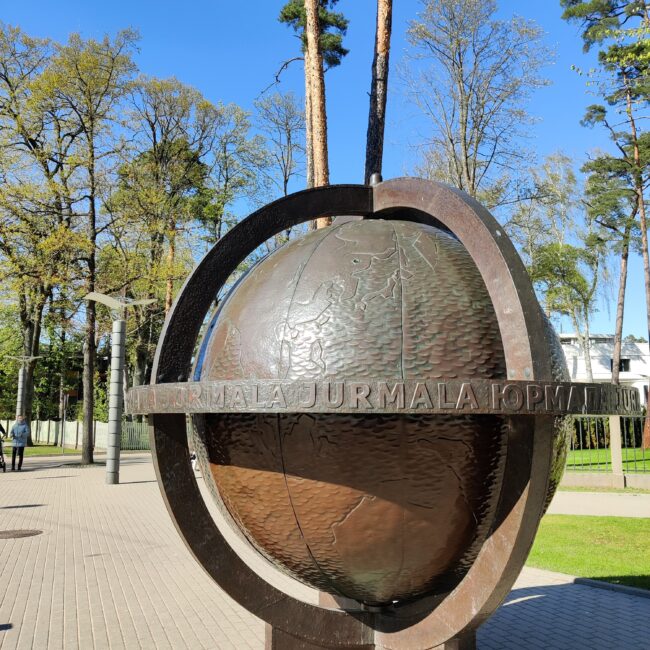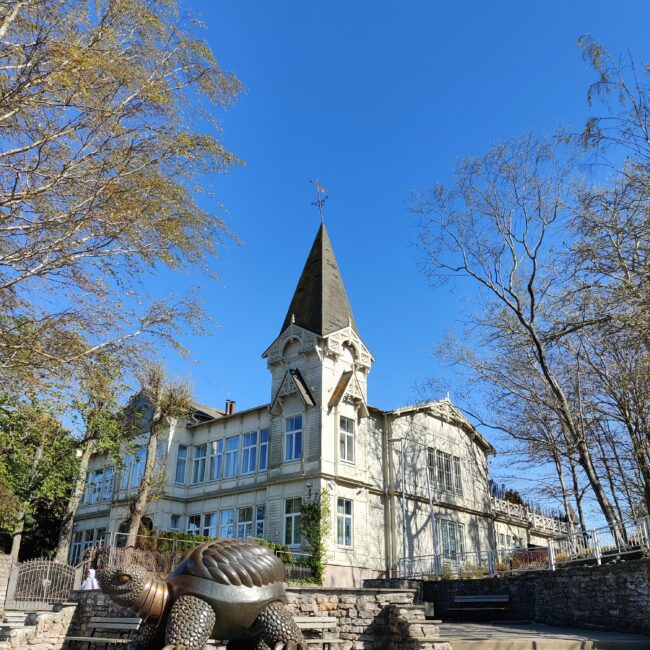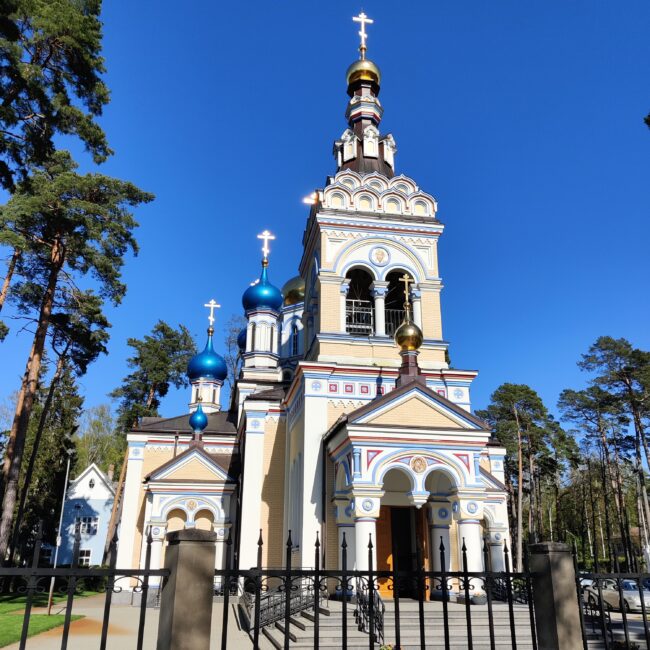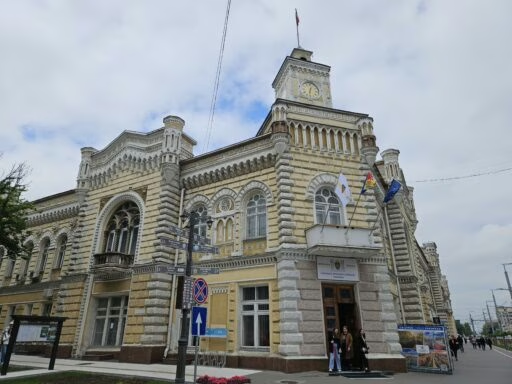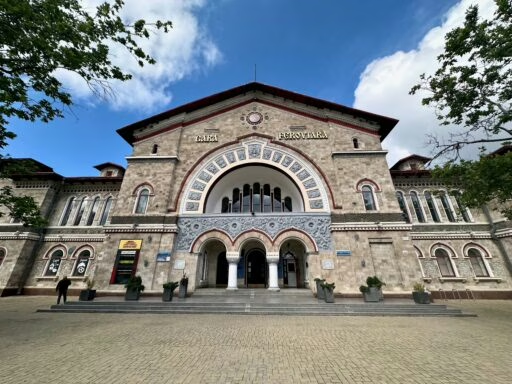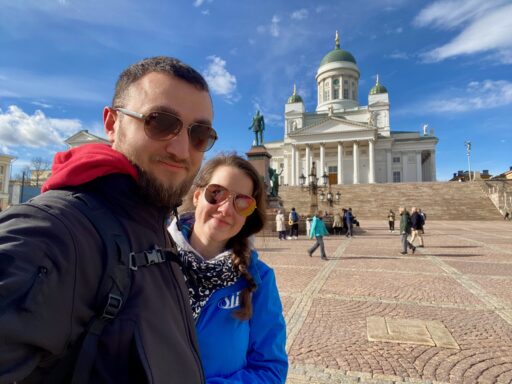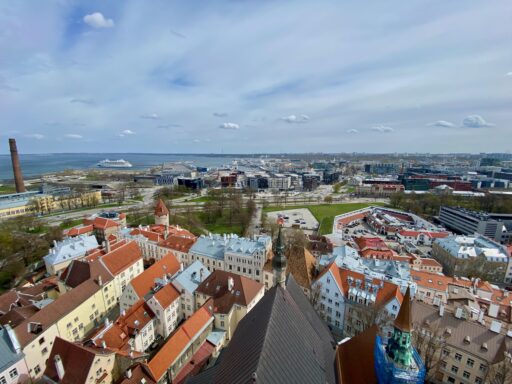This post is also available in:
Polski
Hello! 👋
Welcome to the third part of our May getaway series! This time, we’re taking you on a journey from Estonia to Riga, the capital of Latvia. If you haven’t had the chance to check out our previous posts yet, we highly recommend them! In the first part, we shared our impressions of 🇱🇹 Vilnius, while in the second, we recounted our rainy adventures in 🇪🇪 Tallinn and our spontaneous ferry trip to 🇫🇮 Helsinki. If you’re curious about those experiences, be sure to explore the earlier articles—they’re packed with inspiration and tips! 😊
Today we focus on what happened next. What was the way to Riga like? And above all – what are our first impressions of the Latvian capital? We invite you to read on! ✨
How did we get to Riga?
After bidding farewell to Tallinn, we set off toward Riga. The journey covered approximately 310 km, mostly along the E67 route, also known as the Via Baltica. The road was straightforward and well-marked, making the trip smooth and hassle-free.
We left Tallinn around 10:30 AM and arrived in Riga at approximately 3:00 PM. The journey was smooth, with no major disruptions or traffic jams, although the traffic picked up slightly as we approached Riga, which is typical for larger cities. Driving through the scenic landscapes of Estonia and Latvia, we enjoyed the beauty of the countryside and the charm of smaller towns along the route. The road was in good condition, which made our trip even more pleasant.
Documents and border crossing
When traveling from Estonia to Latvia, border crossing is smooth, without passport control, thanks to both countries’ membership in the Schengen area. Nevertheless, it is a good idea to carry the following documents:
- ID card or passport: Basic identity documents that may be required during possible inspections.
- Driving license: A Polish driver’s license is recognized in European Union countries, including Estonia and Latvia.
- Vehicle registration certificate: A valid document confirming the registration of a vehicle. It is advisable to make sure that you have a permanent registration card and not a temporary one, as the latter may not be accepted abroad.
- Liability Insurance: Liability policy is recognized in EU countries. A green card is not required in Estonia or Latvia.
- Authorization to use the vehicle: If the car is leased or we do not own it, it is a good idea to have a written authorization to use the vehicle, preferably translated into English.
In the context of digital identity documents, such as the mObywatel app, they are currently not widely recognized outside Poland. However, work is underway to bring the application in line with EU standards, which will allow it to be accepted in other EU countries in the future.
Road conditions in Latvia
Latvia’s main roads are usually in good condition, but off the main routes you may encounter sections with inferior pavement quality. It is advisable to exercise caution, especially on less traveled roads, where there may be bumps or potholes.
The standard speed limits in Latvia are:
- Built-up area: up to 50 km/h (in urban centers it can also be 30-40 km/h).
- Unbuilt area: up to 90 km/h.
- Two-lane roads: up to 110 km/h (in the period from December 1 to March 1 – 90 km/h).
Additional rules to keep in mind
It’s worth noting that Latvia doesn’t have traditional highways where speeds exceed 90 km/h. On most roads, the speed limit does not exceed 90 km/h, ensuring a steady and relaxed pace for drivers.
For passenger cars weighing up to 3.5 tons, using roads in Latvia is free of charge. Road tolls apply to vehicles weighing over 3,000 kg that are designated for cargo transportation.
According to the Vienna Convention, vehicles must be equipped in accordance with the regulations of their country of registration. For Polish drivers, this means carrying a functional fire extinguisher and a warning triangle. Additionally, it is recommended to have a first aid kit, a reflective vest, and a set of spare bulbs on hand.
In Latvia, it is mandatory to drive with dipped headlights on at all times, throughout the year. Failing to comply can result in a fine of €10 during the day and €40 at night or in conditions of poor visibility.
From December 1 to March 1, the use of winter tires is mandatory in Latvia. The minimum tread depth for winter tires is 4 mm. The use of studded tires is permitted from October 1 to May 1.
The legal blood alcohol limit for drivers in Latvia is 0.5‰. For drivers with less than two years of experience, the limit is reduced to 0.2‰. Exceeding these limits can result in hefty fines and potential loss of a driving license.
Roads in Riga
The main roads in Riga are well-maintained and meet European standards. However, in some areas of the city, especially on the outskirts, you might encounter roads with poorer surfaces, including potholes and bumps. In the city center, roads are regularly upgraded, which can lead to traffic disruptions due to construction work.
Riga, like most capitals, faces congestion issues, especially during peak hours—morning (7:30–9:30) and afternoon (16:30–18:30). The heaviest traffic is observed at city entrances and in central districts where major roads intersect.
In the heart of Riga, many streets are one-way, requiring extra attention while navigating. The Old Town (Vecrīga) is largely a pedestrian-only zone, restricting vehicle access.
Paid parking zones in Riga
Riga operates a paid parking zone system divided into five areas marked by colors: orange, red, green, blue, and yellow. Each zone has its own pricing and operating hours, allowing drivers to choose according to their needs and location.
- 🟠 Orange Zone: The most expensive, covering central areas of the city. The fee is €5 for the first hour; each additional hour is €8.
- 🔴 Red zone: charge €2.50 for the first hour; each subsequent hour is €3.
- 🟢 Green Zone: Charge €2 for the first hour; each additional hour is €2.50.
- 🔵 Blue zone: charge €1.50 for the first hour; each subsequent hour is €2.
- 🟡 Yellow zone: the cheapest, with a €1 fee for the first hour; each additional hour is €1.50.
Parking fees in Riga generally apply on weekdays between 8:00 AM and 8:00 PM. On weekends and public holidays, parking is often free or subject to different rates. It’s important to pay attention to local signage for specific rules and rates in each area.
It’s essential to remember that unpaid parking can result in a fine or even towing of your vehicle. Always ensure that you park in a designated area and pay the required fee to avoid penalties.
Public transport in the capital city
Riga boasts a well-developed public transportation network, including buses, trams, and trolleybuses. It’s an excellent option for those who want to avoid the hassle of parking in the city center or simply wish to reach their desired destinations conveniently.
Public transportation in Riga operates from the early morning hours, typically starting around 5:30 AM, until late evening, roughly 11:30 PM. Trams are the most convenient way to navigate the city center, with routes covering most of the key tourist attractions. Meanwhile, buses and trolleybuses serve both the downtown area and the more distant neighborhoods.
When it comes to tickets, several options are available. For tourists, period tickets like 24-hour, 3-day, or 5-day passes are the most convenient. These allow unlimited rides, which is particularly useful for intensive sightseeing. Prices are reasonable – a single-ride ticket purchased from a machine costs around €1.15, while a 24-hour pass starts at €5. However, it’s best to avoid buying tickets directly from the driver, as they are more expensive (approximately €2 per ride).
For those who prefer modern solutions, the Rīgas Satiksme mobile app is an excellent choice. It allows you to purchase tickets and check real-time schedules. This is a convenient option, especially since payments can be made by card.
Accommodation
During our stay in Riga, we opted for an Airbnb rental. We found an apartment near Stabu iela, and while the apartment itself was decent for the price, the building it was located in was a completely different story. It could only be described as a dilapidated structure, reminiscent of abandoned buildings you might find in Warsaw’s Praga Północ district—definitely not what we had envisioned before arriving.
On the plus side, the apartment itself was clean and tidy, and there was free parking available – not a common perk in the heart of Riga. However, what really caught us off guard was its location on what we believe was the sixth floor, with no elevator. Climbing up and down those stairs was quite the “workout” – not that we’re complaining, but after several days of travel, hauling even small bags to the top floor was undeniably tiring. Before heading out, we made sure to double-check that we had everything with us, just to avoid the dreaded trek back up.
Moreover, the apartment had its downsides – the water in the tap decided to be warm only when it felt like it, and entering the building felt like stepping into one of those TikTok trends: a run-down exterior hiding a surprisingly renovated and modern interior.
Would we recommend this accommodation? Definitely no. If you don’t want to test your patience or climb to the top of a staircase “mountain”, it’s better to look for something else.
SIM card
During our journey through Latvia, using Polish SIM cards proved to be both convenient and hassle-free. European Union regulations allow for roaming without additional charges, making communication and internet access throughout the country significantly easier.
However, if you’re planning trips near the borders with Russia or Belarus, it’s worth ensuring that your phone doesn’t automatically switch to a foreign network. This could result in significantly higher roaming charges. To avoid surprises on your bill, consider setting your phone to manual network selection in such areas.
For those anticipating heavy Internet use, an interesting option may be to purchase a local SIM card, such as from operators like LMT or Bite.
Food
During our short stay in Riga, we didn’t dive into the local flavors—this time, we opted for quick and reliable choices.
Latvian cuisine combines simplicity with hearty dishes, perfectly suited to the region’s colder climate. Its staple ingredients include potatoes, cabbage, beets, fish, and various meats. Popular dishes include skābeņu – sorrel soup, pirāgi – small baked pastries filled with bacon, and siļķe kažokā – a layered herring salad with beets and mayonnaise.
Exchange office or ATM?
During our stay in Riga, we managed without needing cash – payment cards are widely accepted almost everywhere: in shops, restaurants, gas stations, and ticket machines.
However, if you find yourself needing cash, it’s best to use ATMs operated by local banks, as they usually offer better conditions than private network ATMs. Remember to always select the “without conversion” option when withdrawing money to avoid unfavorable exchange rates.
Places we have seen
We won’t hide it – Riga didn’t leave a significant impression on us. Sure, it has its historical charm, but many buildings in the city center are neglected, and the overall architecture feels rather unappealing. Of course, the city has its history and atmosphere, but it lacked that “something” that could truly captivate us.
Nevertheless, we managed to visit a few places worth noting – if only to get a more complete picture of Riga. Here are some of the highlights from our short stay.
Old town
Riga’s Old Town is undoubtedly the most picturesque part of Latvia’s capital, earning its place on the UNESCO World Heritage List. Strolling through its narrow, cobblestone streets, you can immerse yourself in the atmosphere of medieval Europe. The district’s central highlight is Cathedral Square, home to the monumental Dome Cathedral—the largest medieval church in the Baltic States.
The Old Town is also filled with charming townhouses, restaurants, and cafés that create a welcoming atmosphere. One of its most iconic landmarks is the House of the Blackheads—an impressive building with an ornate façade, symbolizing the city’s rich history and past prosperity.
While the Old Town is undoubtedly one of the highlights of Riga, it didn’t leave us as awestruck as some other European old towns. Nevertheless, it’s a place worth visiting when exploring the capital of Latvia, offering a glimpse into the city’s rich history and unique character.
Riga Freedom Monument
The Freedom Monument is one of Riga’s most significant landmarks, located on Brīvības Boulevard. Erected in 1935, it commemorates Latvia’s struggle for independence and holds a prominent place in the country’s history.
The monument consists of a towering 42-meter obelisk crowned by the figure of a woman, Milda, holding three golden stars. These stars symbolize Latvia’s three historical regions: Kurzeme, Latgale, and Zemgale. At the base of the monument, there are bas-reliefs depicting scenes from Latvian history and culture.
This site holds both historical and contemporary significance. It serves as a location for laying flowers during national ceremonies and patriotic demonstrations. The Freedom Monument is an essential landmark in Riga, symbolizing Latvia’s arduous journey to independence.
Bumbu Hill Firewatch Tower
Seeking something different from the hustle and bustle of Riga’s city center, we ventured beyond the urban core to visit the Bumbu Hill Firewatch Tower. Located on Bumbu Hill, this lookout offers a serene and natural setting, providing a refreshing escape from the city’s urban landscape.
The watchtower, though simple in design, offers a unique vantage point to view the surrounding area from a different perspective. After climbing to the top, visitors are rewarded with panoramic views of the lush green landscapes around Riga, making it particularly enjoyable on warmer days. While not a typical tourist hotspot, this site might appeal to nature enthusiasts or landscape photography lovers looking for something off the beaten path.
Our time here offered a refreshing break – something completely different from exploring the landmarks in the city center. It’s an ideal spot for a short visit, perfect for those looking to escape the crowds and experience Riga’s wilder, more tranquil side.
Jurmala
During our visit to Riga, we decided to take a trip to Jūrmala, a popular Baltic seaside resort located about 20 km from Latvia’s capital. The town is accessible by various means of transport, including train, car, minibus, river ferry, or even bicycle.
We opted to travel by car. It’s important to note that entering Jūrmala requires an environmental access fee. Before entering, drivers need to stop at a designated parking area and pay a fee of 3 euros. Payment can be made via card, cash, or a mobile app. However, the parking area is poorly marked, making it easy to miss. If you happen to bypass the payment point, you can turn back and settle the fee without any issues.
Jūrmala is renowned for its stunning sandy beaches stretching over 25 kilometers. The city is distinguished by its historic wooden architecture and pine forests, creating a unique atmosphere perfect for relaxation and leisure.
Back home – returning to Poland
And so, our 2023 May holiday adventure came to an end. Riga? Let’s be honest – it was underwhelming. Would we want to go back? Probably not. There wasn’t anything particularly captivating about the city. Thankfully, Latvia isn’t just about Riga – if we ever pass through again, we’ll certainly try to explore more of what the country has to offer.
Without making significant stops, we headed back to Poland. Along the way, we stopped just once for refueling, and with a full tank, we made it home. We were satisfied with what we had seen, and the beautiful views left us with positive memories.
The only bittersweet reflection? We couldn’t find a Starbucks in Lithuania, Latvia, or Estonia to add a new mug to our collection. But hey, you can’t always have everything! 😊

